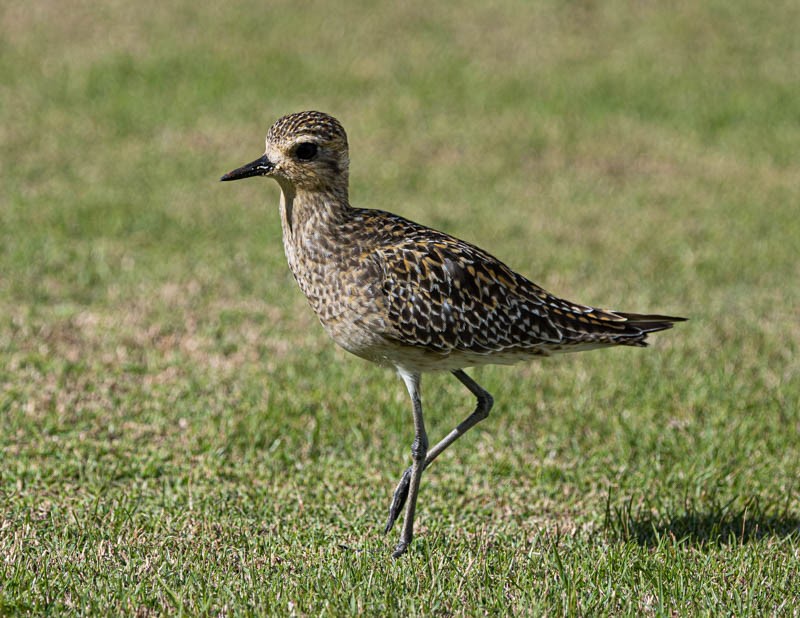
Wally the Kolea, October 27, 2021. ©Photo courtesy Roger Kobayashi,
November 2, 2021
Last week, I received an email from a long-ago friend of plover expert, Wally Johnson, who found him through the Kolea Count website where Wally and I are pictured together. I forwarded the message to Wally and a thread followed, containing news of former students, colleagues and friends.
Wally wrote a note of thanks for the communication, ending with the statement, “Plovers bring people together.”
They do, sometimes in surprising ways.
During my morning walk with Craig and our little dog, Pixel, I keep an eye out for four Kolea that have each returned to their specific areas for several years. Because these birds feel like old friends, I’ve named them according to their locations:
- Cookie (near three towering Cook pine trees.)
- Bilbo (behind a charming little hobbit-type house)
- Bougie (in front of an enormous red bougainvillea bush)
- Ms. Ed (a pasture bird I called Mr. Ed until she showed her colors last April.)
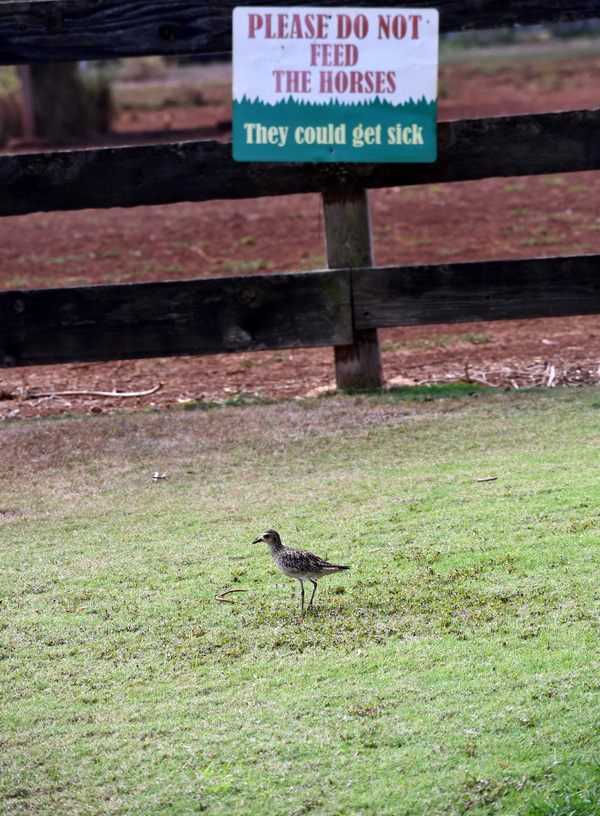
Ms. Ed. ©Susan Scott
I’d been worried about one of the birds because I hadn’t seen him during my last few passes. Saturday, he appeared. “Craig, look,” I said, pointing.
At that, a visitor sitting in a nearby rental car called out, “That’s a Kalola,”
“What?” I said.
“That bird,” the man said, smiling, and also pointing. “It’s a Pacific ploover.”
The man may not have had the names down pat, but sharing his knowledge of Hawaii’s special birds left the three of us smiling.
“Thank you,” I said.
The visitor drove off before I could tell him that the bird’s other name was Bilbo.
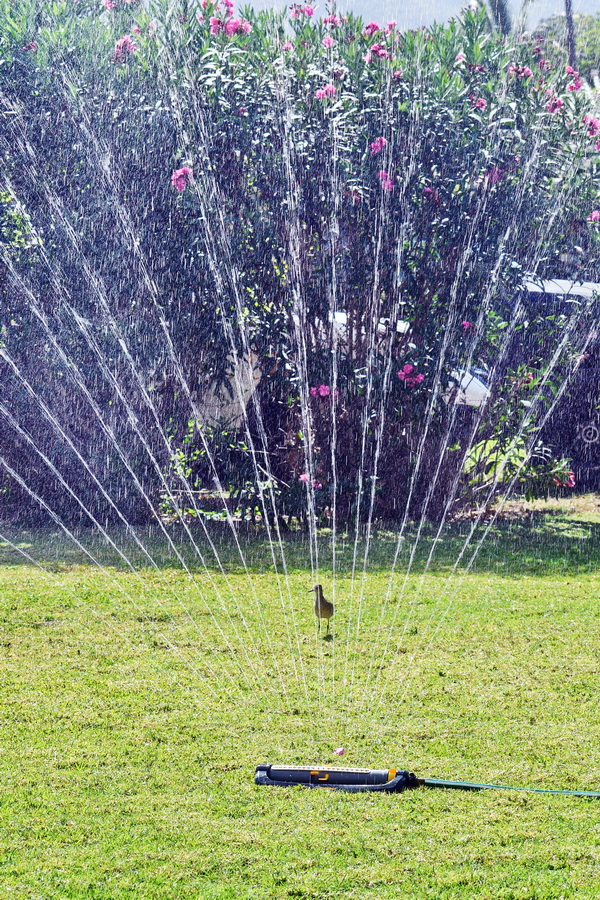
Bilbo taking a shower. ©Susan Scott
Kolea fans feel like friends too even though we haven’t yet met. In July, retired Department of Defense accountant, Roger Kobayashi, volunteered to do weekly counts at all three fields at Ala Pu’umalu Park. (We ask for three counts per site, but more data is always good.) When Roger learned I was looking for a counter on Ford Island, he stepped up for that too.
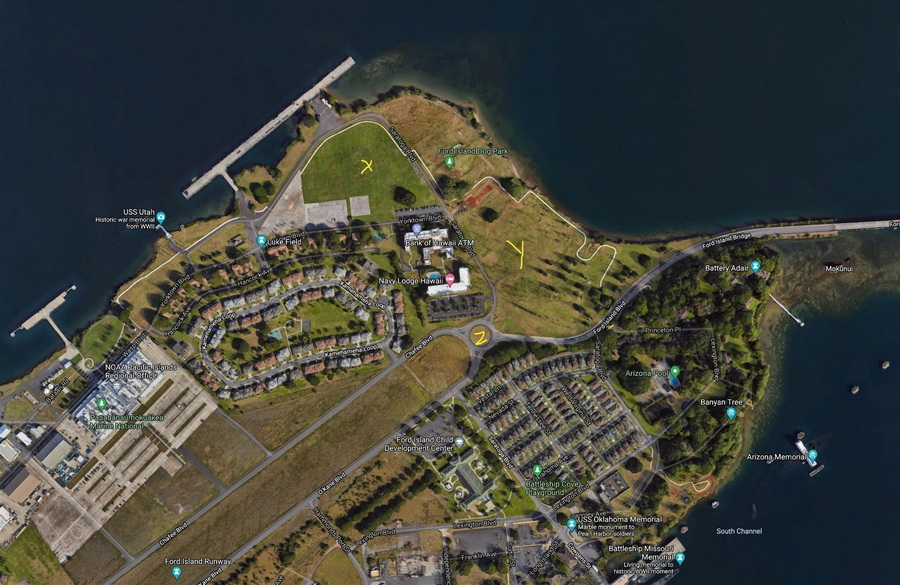
Roger Kobayashi sent a Google map of Ford Island, marking X, Y, and Z as to his first Kolea sightings, August 1, 2021.
Since then, besides sending a wealth of information about the many plovers he’s watching, Roger now has a resident Kolea who comes close when Roger offers it bits of scrambled egg. He named the bird Wally, giving me (and I’m sure Wally Johnson when he reads this) another smile.
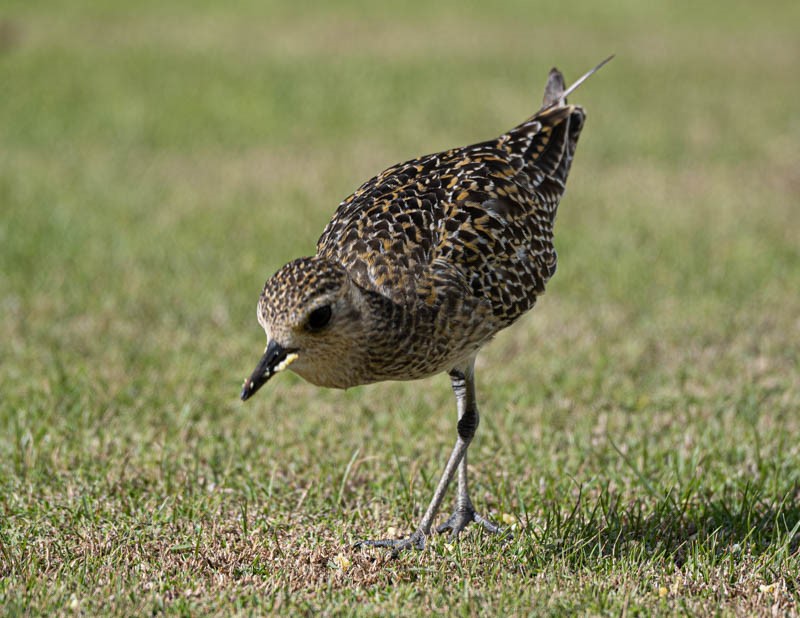
Wally, the bird, enjoying a scrambled egg offering. Please feed your bird only healthy food, such as scrambled egg or mealworms. ©Roger Kobayashi
Years ago, I gave a Kolea talk for a senior citizen club, and during the subsequent question-and-answer period, a woman raised her hand, and asked, “But what good are they?”
I repeated the usual phrases about appreciating nature, protecting native species, and sharing the planet with wildlife.
“But if we can’t eat them or use their feathers for something,” she persisted, “then what are they good for? I mean, why should I care about a bunch of birds?”
Now Wally, the man and the bird, have given me the perfect answer: Plovers bring people together.
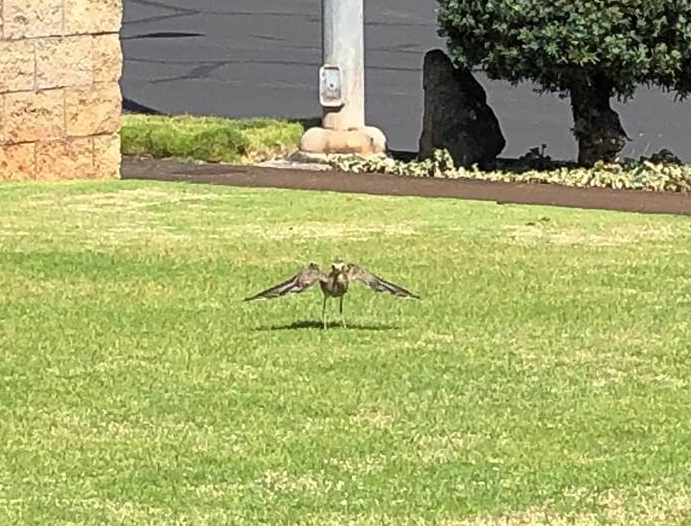
I have only seen Kolea spread their wings like this when defending their territory from another bird. Roger’s resident bird, Wally, displays like this often, perhaps as a warning to stay away from its egg treats. ©Roger Kobayashi
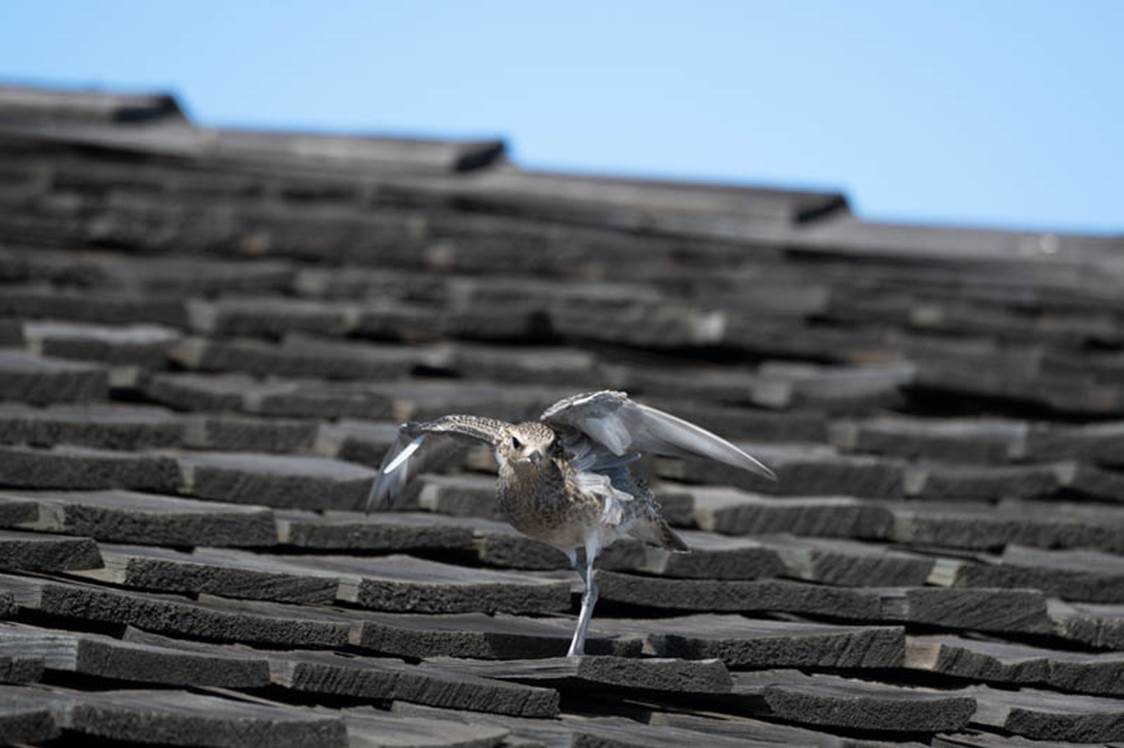
Kolea Count Updates
- Sigrid Southworth reports that our Mr. X is back in Punchbowl Cemetery, missing one of his two original red leg bands, but looking good. Wally Johnson banded the bird there 19 years ago.
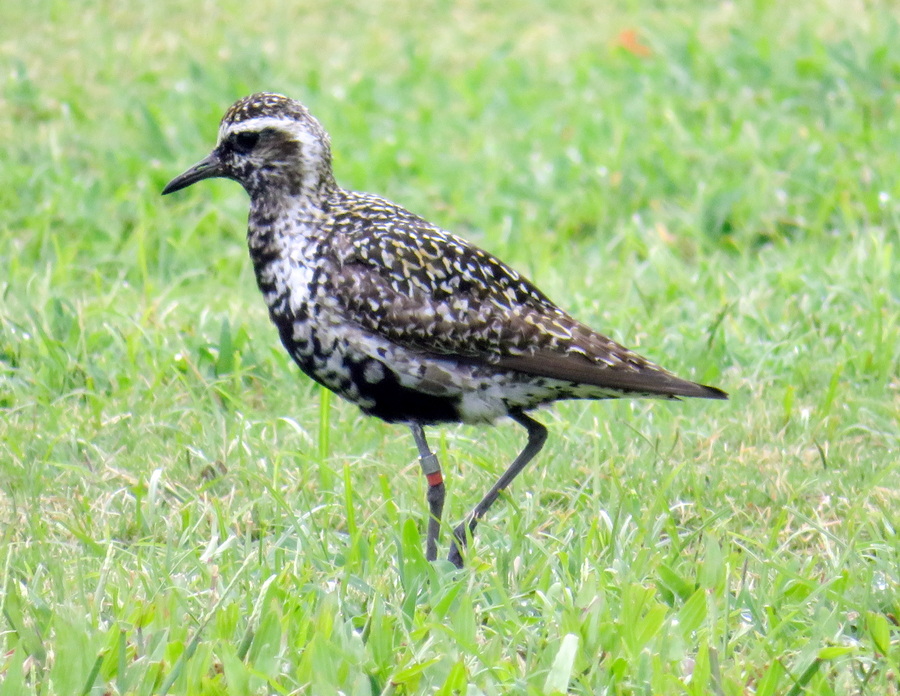
Mr. X at Punchbowl Cemetery, less one red band. August 27, 2021 ©Sigrid Southworth
- As of this writing, we have 481 entries reporting a total of 1,048 Kolea in the Arrival Date report. In October, some very skinny birds, likely the summer’s chicks, showed up, surviving their first, 3,000-mile solo trip from Alaska to Hawaii. Congratulations to the birds and thanks to their human admirers for recording the feats.
- Federal biologists from Alaska and Hawaii recently traveled to Midway Atoll to band shorebirds. The Kolea were so wary of humans—whether walking, driving or riding bicycles—that fewer plovers were caught and banded than planned. This is a reminder as to how special our friendly Kolea are here on the main islands.
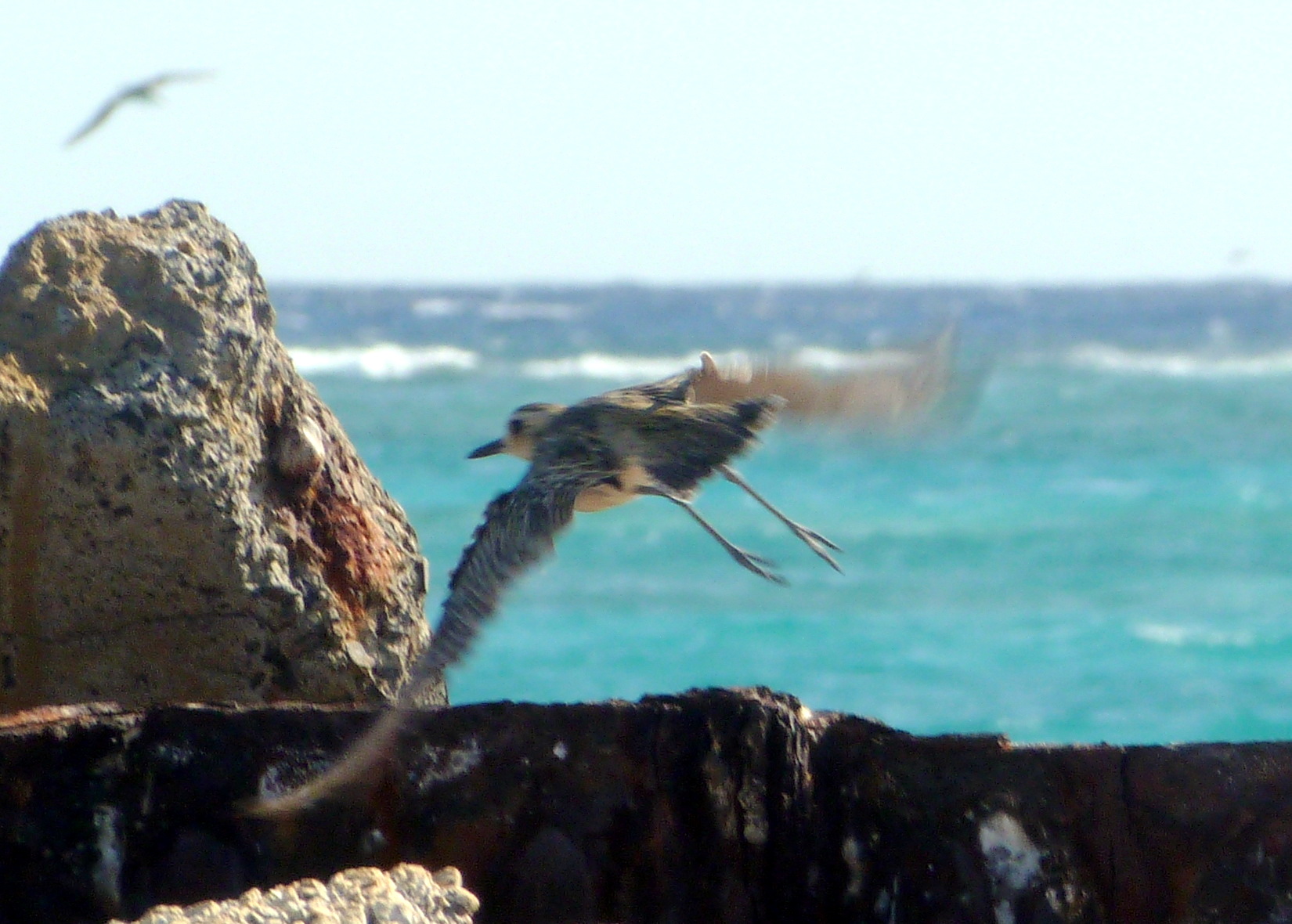
At Midway in 2020 I had to hide in a naupaka bush to shoot photos of the Kolea there. The second I lifted my camera, the skittish birds flew off. ©Susan Scott
- The official count for 2021-2022 begins December 1st. Go to the READ ONLY site http://bit.ly/2BFwVX to see the areas left to count. Email me your choice in the CONTACT tab, and I’ll sign you up.
- Because of space limitations, I have to stop here, leaving out dozens of heart-warming entries, notes, and stories, all testimony to these marvelous birds and the people who care about them. Thank you for sharing them.
- I see a Kolea Festival in Hawaii’s future. That way we can let our plovers do one of the many things they do so well: Bring us together.
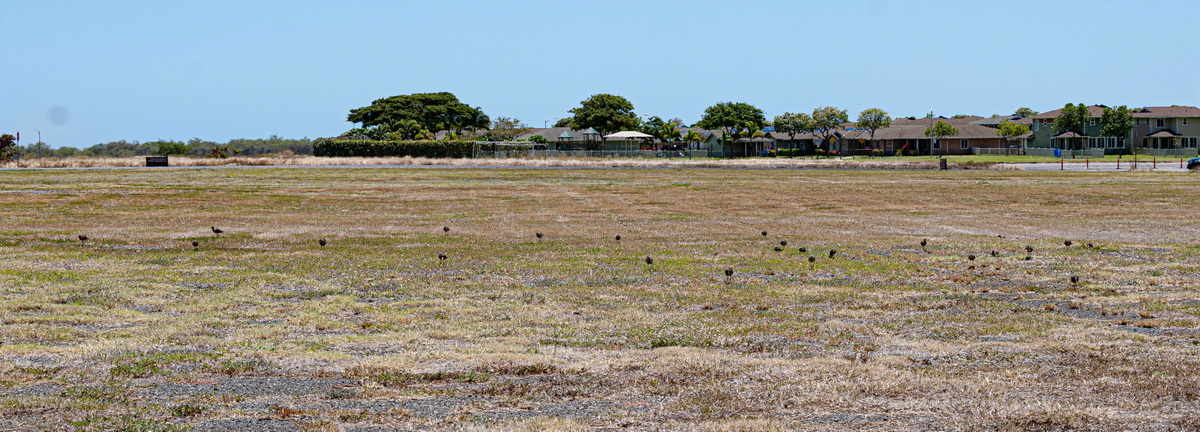
Incoming. Plovers at Ford Island, August 1, 2021 ©Roger Kobayashi